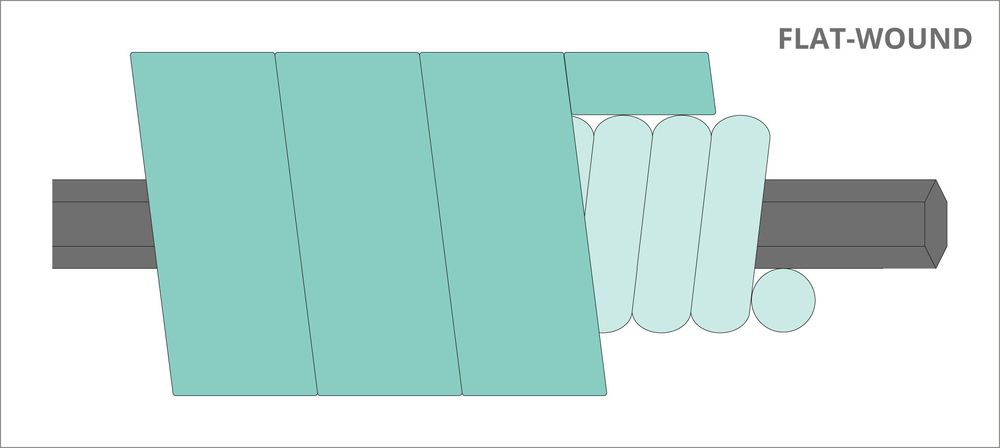6. String Selection
Your string selection sets the tone and determines "your personal" sound. The selection is gigantic, and the search for the "perfect" strings resembles that of the Holy Grail.
But which strings should I buy then? Well, unfortunately, this question isn't so easy to answer.
However, the following should definitely be considered.
- What genre of music do I want to play?
- Do I play with a bow or plucked?
- What is the proportion of arco, pizzicato, or slap playing?
- What is my budget?
- How high is the action?
- Do I have an adjustable bridge?
We can only offer recommendations here. You'll have to gain experience yourself. Many bassists haven't found "their perfect" strings even after years. So, patience is key :-)
A string can be made of various materials. Mostly, gut, steel, nylon, and plastic are used.
But let's start with the structure of a string.
The Core:
There are 2 types of cores.

Round and Hex Core
Round Core
This consists of a round wire on which the winding is fixed with a special adhesive. By fixing the winding to the wire, the vibration behavior is supposed to be improved.
Hex Core
A hexagonal shape of the core ensures that the winding has more grip due to the edges than with the round core. No adhesive is used. As a result, the string remains more flexible since it is not fixed like with the round core.
Winding Types:

The winding types Roundwound, Flatwound, and Halfwound
Roundwound (unpolished)
Roundwound strings appeared on the market in the 1960s. The core is wrapped with an unpolished round wire. These strings are very assertive and rich in overtones, which is why they are mainly used in rock and metal music.
Flatwound (polished)
Flatwound strings existed before round-wound strings. For their winding, a type of flat wire is used. The smooth surface reduces the fret noise to a minimum. Flatwound strings are quite stiff, have less sustain, and sound relatively dull.
Dirt hardly stands a chance on these strings since the gaps between the individual windings are smaller. Thus, the life expectancy of these strings is much longer than others.
Halfwound (partly polished)
Halfwound strings are a mixture of roundwound and flatwound strings. The basis is a round stainless steel winding wire, which is polished after the winding process. The result is strings that sound much livelier and more open than polished strings.
For use in contemporary rock and pop music, however, half-round strings are not necessarily recommended. But for studio work, many musicians prefer these strings because unpleasant fret noise is minimized.
Gut Strings:
Gut strings are very time-consuming to manufacture and are therefore very expensive. They are made from the intestines of animals (mostly sheep). Because of their warm and unique sound, they are often used in orchestras and for Baroque instruments. However, they are also popular for jazz and slapping because they are very soft. Gut strings are also very sensitive to temperature and humidity fluctuations.
Steel Strings:
Steel strings are very robust and extremely resistant to temperature and humidity fluctuations. Because of their powerful and dark sound, they are very popular among orchestral musicians.
Nylon Strings:
High tuning stability and a short breaking-in period characterize nylon strings. They are also insensitive to weather influences.







